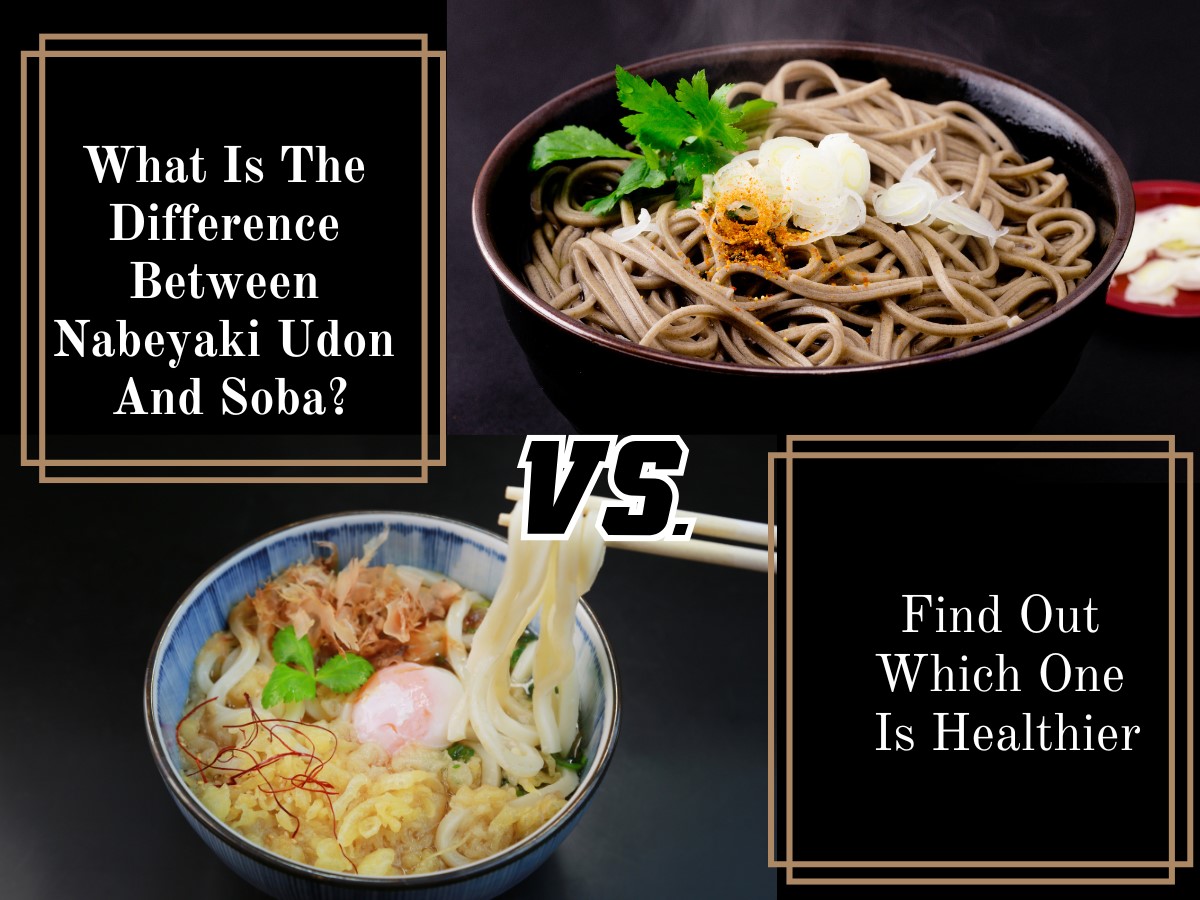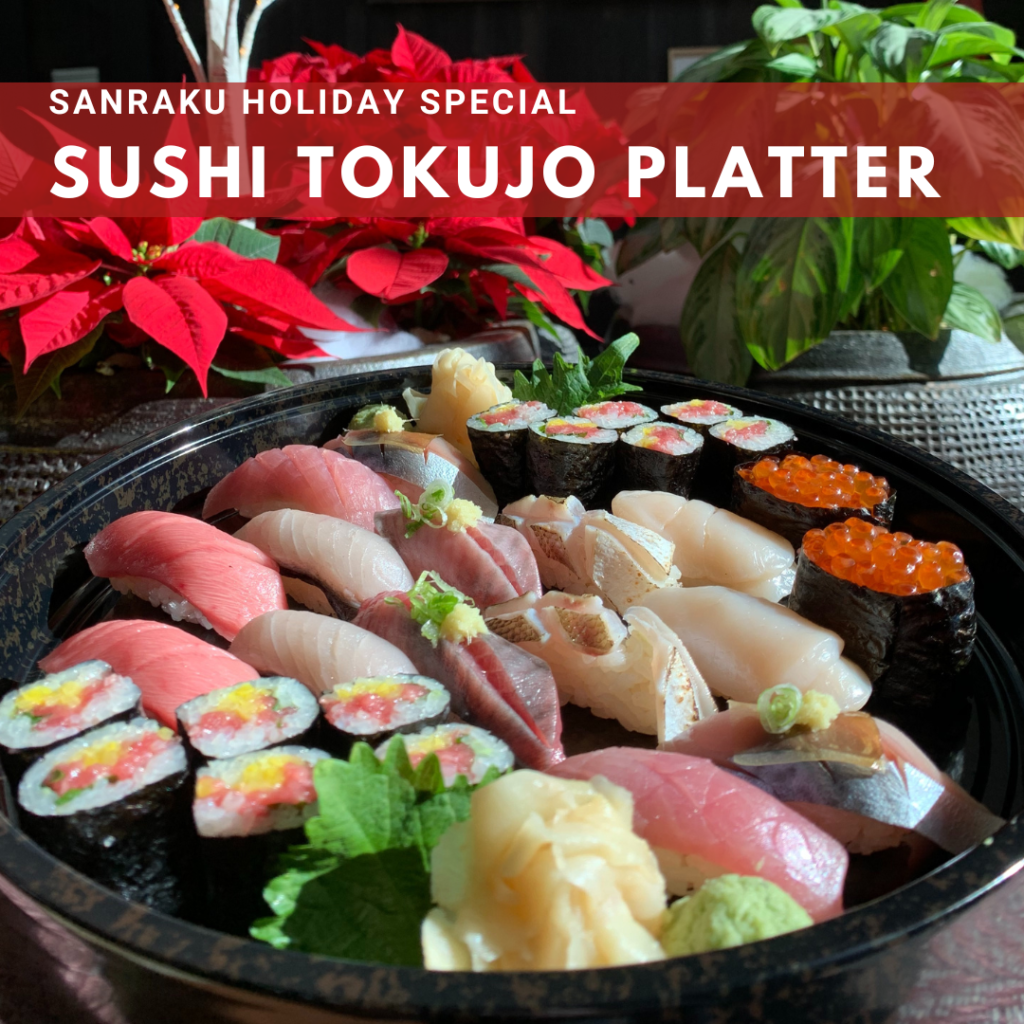Noodles are everyone’s favorite since they are a staple of almost all cultures and cuisines. There are, however, different ways to prepare noodles in different regions. Some recipes make noodles using wheat flour, rice, eggs, buckwheat, starch, and seaweed. The same is true for Japan, where popular varieties of noodles include ramen, Soba, udon, somen, shirataki, Hiyamugi, Harusame, and Tokoroten. Each of these assortments is scrumptiously delectable, nutritious, and distinctly prepared. Nevertheless, many people confuse Udon with Soba due to slight differences in appearance, thickness, and taste. If you also wonder, “what is the difference between Nabeyaki Udon and Soba” read the following description.
Nabeyaki Udon is a traditional Japanese staple food loved by all, ideally served during cool weather for a comforting supper. Forever iconic, Nabeyaki udon comprises Udon noodles soaked in a delicious and warming miso soup, served with tempura, chicken, and vegetables. In contrast, Soba is a Japanese noodle typically served with dipping sauces in the summer. However, in the winter, hot, nourishing soups bring out the warmth and taste of the dish.
Table of Contents:
- What Is The Difference Between Nabeyaki Udon And Soba?
- What is Nabeyaki Udon?
- Types of Udon Dishes
- What is Soba?
- Types of Soba Dishes
- Udon vs. Soba; Which One is Healthy?
- Nutritional Value of Nabeyaki Udon
- Nutritional Value of Soba Noodles
What Is The Difference Between Nabeyaki Udon And Soba?
| Characteristics | Udon Noodles | Soba Noodles |
| Type of Flour | Wheat flour | Buckwheat flour |
| Color | White with gloss | Gryeish brown and dull looking |
| Taste | Mild flavor that blends well with many side dishes and dipping sauces | Nutty or earthy flavor which needs to be balanced when combined with other dishes such as broth |
| Texture | Chewy and bouncy | Grainy and springy |
| Thickness | Thicker and wider than Soba; approximately ⅛ inches (3mm) thick and 4-6 mm wide | Relatively less thin and wide; approximately 1/16 inches thick |
| Serving | Served with miso soup; Nabeyaki Udon
Can be served with dipping sauces |
Mostly served with dipping sauces
Can be served with hot soups |
What is Nabeyaki Udon?
Nabeyaki Udon is a classical Japanese dish serving udon noodles with miso soup or dashi stock. It also contains poached eggs, tempura, chicken, kamaboko, dried shiitake mushrooms, spinach, scallions, green onions, and carrots. Udon noodles being mild in flavor, combines well with almost every nutritious and delectable eatable. The following are the types of dishes you can prepare using udon noodles.
Types of Udon Dishes
Try the following Japanese dishes and indulge in the goodness of udon.
Kake Udon
Kake udon is the most basic Japanese dish made with glossy udon noodles and luscious kakejiru. Kakejiru is a warming soup stock containing dashi, soy sauce, mirin, and other condiments, garnished with fresh green onions and ginger for an appetizing aroma. Moreover, Kake udon combines numerous additional ingredients and toothsome side dishes to create a palatable main course meal.
Yaki Udon
Yaki udon is a classical stir-fried dish popular in Japan in which udon noodles are stir-fried with pork and various vegetables. Yaki udon infuses the savoriness and umami flavor of mirin and soy to serve you a slurp-worthy nutritious udon meal. Moreover, the frying technique is known as Yakisoba, which is why the dish is named Yaki udon.
Tanuki Udon
Tanuki udon is a soup dish made with udon noodles soaked in an umami-rich dashi soup or broth and topped with crispy bits of tempura (tenkasu). You can savor your taste buds more by adding seaweed or slices of cured surimi. Moreover, this Japanese delicacy is super refreshing and revitalizing, best for summer dinners.
Kitsune Udon
Kitsune udon is the ultimate Japanese comfort food made with a simmering hot dashi soup, udon noodles, fried tofu, fish cake, and scallions. You can add different sauces and condiments to balance your choice’s umami and savory flavor. Make it meaty or veggie; everyone will still love it.
Curry Udon
Curry udon, as the name indicates, is prepared with udon noodles cooked in a special Japanese curry. You can make curry using any kind of protein, vegetables, and condiments. Moreover, you can add dashi soup stock or Japanese curry roux.
Stamina Udon
Stamina udon is a Japanese noodle dish with various proteins such as chicken, pork, fish, shrimp, raw eggs, and many vegetables. As the name indicates, this udon dish is known to increase the vigor and stamina of regular consumers.
Tempura Udon
This flavorful hot soup dish features chunks of deep-fried shrimp (tempura) or stir-fried veggies together with glossy white Udon noodles. The hearty blend of mirin, soy sauce, and black pepper brings the exotic balance of savoriness and umami flavor to this Japanese delicacy.
Zara Udon
When soups are hard to get in restaurants during the summer, Zara udon is the ideal cold broth meal to satisfy your hunger and satiety needs. It is prepared with a cold metsuyu soup base soaked in udon noodles with a mild flavoring. Daikon radish, wasabi paste, and nori sheets are used as garnishes.
What is Soba?
Soba noodles- the classical Japanese staple food made with unleavened dough from buckwheat flour are highly nutritious with a nutty flavor and a grainy texture. These are thin than udon noodles and resemble spaghetti ( made of whole wheat flour).
Types of Soba Dishes
You can make the following soba dishes with soba noodles.
Zaru Soba
Zaru soba is a Japanese delicacy with chilled soba noodles, assorted dipping sauces, and garnishings. This cool and refreshing meal is the best to have on bright sunny days when you are thirsty and hungry at the same time.
Kake Soba
Kake soba is a festive special meal that the Japanese love to cook and serve on New Years’ eve. It is a warming and cozy meal prepared by soaking nutritious soba noodles in a simmering hot broth. The broth is usually made with dried bonito flakes, kelp, and umami–rich dashi stock.
Yaki Soba
Yaki soba is prepared in various street-style foods by combining the savory flavor of stir-fried soba noodles with different proteins, veggies, and sauces. Moreover, yaki soba is best served with a tangy and umami Worcestershire sauce.
Tempura Soba
In this recipe, the nutty and earthy flavors of soba noodles are combined and balanced with the sweet and sour savoriness of tempura. People usually love how tiger prawns blend toothsomely with the nutty and grainy soba noodles; you can still pick tofu tempura or aubergine varieties.
Tsukimi Soba
Tuskimi soba is made by pouring creamy and umami-rich dashi soup over the nutty soba noodles. Balancing the heat of condiments with sweet carrots and green onions is a good solution for the smart infusion. Moreover, the hero of Tsukimi soba is a fried egg topped with noodles.
Kitsune Soba
With kitsune soba, you may scrumptiously satiate your late-night cravings. Just prepare and pour a dried kelp broth over the nutty soba noodles and garnish it with tofu, green onions, and scallions. Enjoy the luscious meal.
Oroshi Soba
Being aromatically toothsome and relishing, Oroshi soba soup is the coziest supper meal. Make a stand-out broth with dried bonito flakes, kelp, daikon radish, ginger, green onions, and exotic shiitake mushrooms.
Yamkake Soba
Yamakake Soba offers all the coziness you need to heat a frigid winter eve with its basic miso broth, shredded yam, a dash of leeks, and heaps of noodles.
Udon vs. Soba; Which One is Healthy?
Since soba noodles are made from unleavened dough from buckwheat flour, these are more nutritious and healthy than udon. It is because buckwheat is low in carbohydrates, so people on a diet should prefer soba noodles. Moreover, buckwheat is gluten-free, so people with a gluten allergy can safely consume soba. This comparison does not mean that udon noodles are not safe and healthy; rather, these carbs are difficult to eliminate and do not fulfill satiety value. Furthermore, you can have udon noodles when you want something light and more refreshing.
Nutritional Value of Nabeyaki Udon:
A meal of Nabeyaki udon containing these ingredients comprises the following nutritional components.
- 4 oz Chicken
- 120 grams fish cakes
- 1 large egg
- ⅛ cup chopped broccoli
- 2 large pieces tempura
- 1 serving udon noodles
| Nutritional Components | Amount per Serving |
| Carbohydrates | 527.52 grams |
| Protein | 66.88 grams |
| Fat | 34.85 grams |
| Fibre | 1.6 grams |
| Sodium | 1163 milligrams |
| Potassium | 877 |
Nutritional Value of Soba Noodles:
| Nutritional Component | Amount/% OF RDI |
| Carbohydrates | 42 grams |
| Protein | 8 grams |
| Fiber | 3 grams |
| Fat | 0 grams |
| Sodium | 0% of RDI |
| Magnesium | 14 % of RDI |
| Manganese | 37 % of RDI |
| Copper | 7 % of RDI |
| Iron | 9 % of RDI |
| Vitamin B3 | 9 % of RDI |
| Vitamin B1 | 18 % of RDI |
Also Read: The Chef’s Tutorial for The Perfect Miso Soup Recipe






